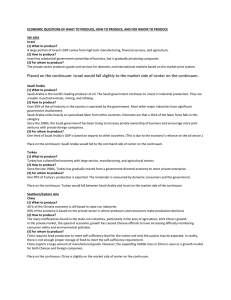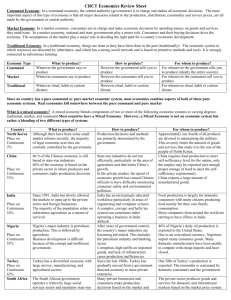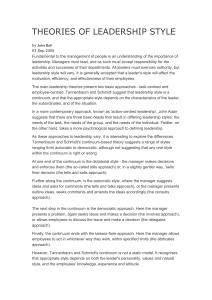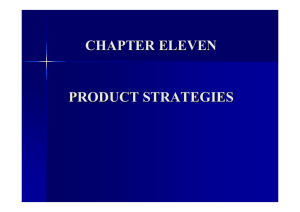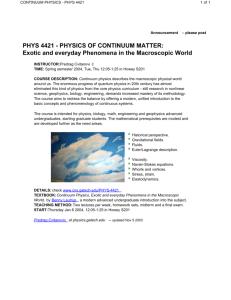Economic Systems Continuum Activity
advertisement
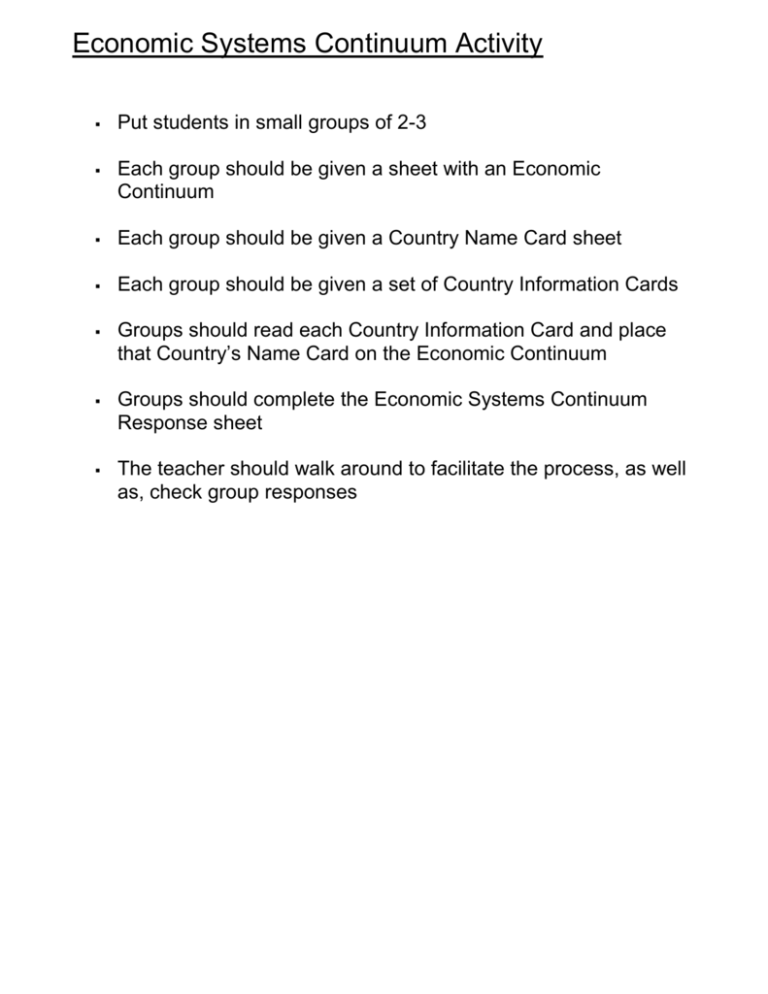
Economic Systems Continuum Activity Put students in small groups of 2-3 Each group should be given a sheet with an Economic Continuum Each group should be given a Country Name Card sheet Each group should be given a set of Country Information Cards Groups should read each Country Information Card and place that Country’s Name Card on the Economic Continuum Groups should complete the Economic Systems Continuum Response sheet The teacher should walk around to facilitate the process, as well as, check group responses Economic Systems Continuum Activity: Country Name Cards Israel Saudi Arabia Turkey China India Japan North Korea South Africa Nigeria Economic Systems Continuum Activity: Country Information Cards Israel 1) What to produce? A large portion of Israel’s GDP comes from high tech manufacturing, financial services, and agriculture 2) How to produce? Israel has substantial government ownership of business, but is gradually privatizing companies. 3) For whom to produce? The private sector produces goods and services for domestic and international markets based on the market price system Saudi Arabia 1) What to produce? Saudi Arabia is the world’s leading producer of oil. The Saudi government continues to invest in industrial production. They are a leader in petrochemicals, mining, and refining. 2) How to produce? Over 95% of the oil industry in the country is operated by the government. Many other major industries have significant government involvement. Since the 1980s, the Saudi government has been trying to increase private ownership of business and encourage more joint ventures with private foreign countries. 3) For whom to produce? One third of Saudi Arabia’s GDP is based on exports to other countries. Turkey 1) What to produce? Turkey has a diversified economy with large service, manufacturing, and agricultural sectors. 2) How to produce? Since the late 1980s, Turkey as gradually moved from government directed economy to more private enterprise. 3) For whom to produce? One fifth of Turkey’s production is exported. The remainder is consumed by domestic consumers and the government. China 1) What to produce? 40% of the economy is still based in state-run industries; 60% of the economy is based on the private sector in where producers and consumers make production decisions. 2) How to produce? The many inefficiencies found in the state-run industries, particularly in the area of agriculture, limit China’s growth. 3) For whom to produce? China requires food production to meet selfsufficiency level for the nation and only the surplus may be exported. China exports a large amount of manufactured goods. Economic Systems Continuum Activity: Country Information Cards India 1) What to produce? India has slowly allowed the markets to open up to private sector domestic and foreign businesses. The majority of the population relies on subsistence farming as a means of survival. 2) How to produce? India is increasing its oversight of intellectual and private property rights. India has an increasingly educated workforce. 3) For whom to produce? Food production is largely for domestic consumers with many citizens producing food mainly for their own family consumption. The software and business process outsourcing industries are rapidly expanding export markets for private companies. Japan 1) What to produce? Japan’s economy is primarily market driven with supply and demand determining what will be produced. The few industries that are highly government-controlled, such as agriculture, have much lower productivity rates than those industries controlled by market forces. 2) How to produce? Private businesses determine their own production processes in most of the economy. 3) For whom to produce? Japan’s population enjoys a high standard of living and creates a strong domestic market for goods and services. Japan’s production has made it a major exporter. North Korea 4) What to produce? Although there have been small market reforms recently, the majority of legal economic activities are centrally controlled by the government. Due to disasters and inefficient government-run industries, North Korea is a major recipient of food and service aid from foreign nations. 5) How to produce? Production decisions and methods are primarily determined by the government. 6) For whom to produce? About one fourth of all domestic output is devoted to maintaining the military. This severely limits the amount of goods and services that make it to the rest of the people in North Korea. North Korea produces natural resources and manufactured goods for export. Economic Systems Continuum Activity: Country Information Cards South Africa 4) What to produce? A large portion of South Africa’s GDP comes from a highly developed, privatized enterprise system. The private sector is based on mining, agriculture, services, and manufacturing. The South African government operates a relatively large social services sector and maintains state run enterprises in the areas of housing, business development, education, basic services, and healthcare. 5) How to produce? In the developed sector, private businesses and consumers make production decisions based on market principles. Social services are administered by a number of government ministries. 6) For whom to produce? The private sector produces goods and services for domestic and international markets based on the market price system. The government social services sector produces public goods and services based on the needs of the population throughout the country. Nigeria 4) What to produce? Nigeria’s major industry is petroleum production. This is followed by agriculture. Business development is difficult because of corruption and ineffective government. About 75% of Nigeria’s economy occurs in the informal sector and is not counted in GDP. 5) How to produce? After years of government control, the country’s major industries are increasingly becoming privatized. 6) For whom to produce? 46% of Nigeria’s daily oil production is exported to the United States. Nigerians import many consumer goods. Many domestic manufacturers have been unable to compete with cheap imports and have closed. Economic Systems Continuum Activity: Group Response Sheet Group Members: ____________________________________________________________ 1. Israel Describe location on continuum ___________________________________________ Explain your reasoning __________________________________________________ 2. Saudi Arabia Describe location on continuum ___________________________________________ Explain your reasoning __________________________________________________ 3. Turkey Describe location on continuum ___________________________________________ Explain your reasoning __________________________________________________ 4. China Describe location on continuum ___________________________________________ Explain your reasoning __________________________________________________ 5. India Describe location on continuum ___________________________________________ Explain your reasoning __________________________________________________ 6. Japan Describe location on continuum ___________________________________________ Explain your reasoning __________________________________________________ 7. North Korea Describe location on continuum ___________________________________________ Explain your reasoning __________________________________________________ 8. South Africa Describe location on continuum ___________________________________________ Explain your reasoning __________________________________________________ 9. Nigeria Describe location on continuum ___________________________________________ Explain your reasoning __________________________________________________ Economic Systems Continuum Activity: Economic Continuum Directions: On the continuum below, label Command Economy, Market Economy, and Mixed. Read the Country Information Cards then place the Country Name Cards at the appropriate location on the continuum. Write down your description of the location and your reasoning for each country on the Group Response Sheet. Sample descriptions: between command and mixed, but closer to command; between mixed and market, but closer to market than… Economic Systems Continuum Activity: Economic Continuum KEY Directions: On the continuum below, label Command Economy, Market Economy, and Mixed. Read the Country Information Cards then place the Country Name Cards at the appropriate location on the continuum. Write down your description of the location and your reasoning for each country on the Group Response Sheet. Sample descriptions: between command and mixed, but closer to command; between mixed and market, but closer to market than… These answers are not exact. They are based on information provided in the Teacher Notes. India Turkey Israel China North Korea Mixed Command Saudi Arabia Market Nigeria Japan South Africa
